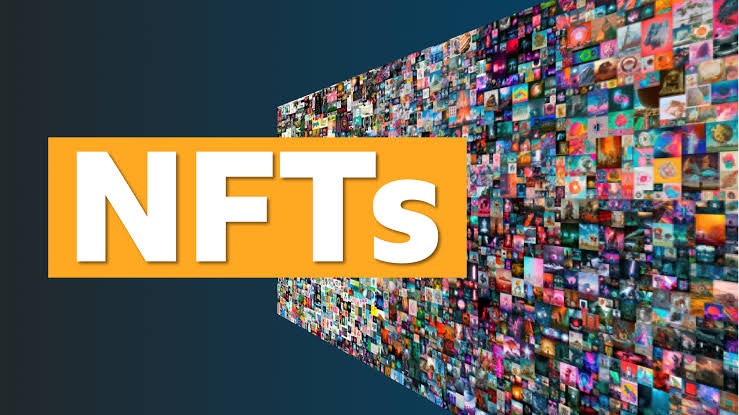6 compelling reasons why NFTs are taking the world by storm
06/05/2022
The cryptocurrency and blockchain space is constantly evolving, with new projects and technologies emerging every day. Amid all the hype and buzz, one particular subset of blockchain technology has been steadily gaining ground: non-fungible tokens, or NFTs. Here are six reasons why NFTs are taking over the world.

1. Unique ownership rights
One of the main benefits of NFTs is that they represent unique ownership rights to a specific asset. Unlike fungible tokens, which can be divided into smaller units and resold, each NFT represents an individual asset that cannot be divided or duplicated.
2. Access to secondary markets
Another advantage of NFTs is that they offer users the opportunity to buy, sell, and trade digital assets on secondary markets. Thanks to their unique ownership rights, these assets can be traded privately or on public exchanges – providing users with a wide range of investment opportunities and making it easier than ever before to liquidate assets quickly and easily.
3. Ease of transferability
NFTs are also highly transferable, meaning they can be sent between users very quickly and easily. This makes them ideal for online games and other platforms where fast asset transfers are necessary for gameplay or other activities.
Furthermore, because NFTs are stored on the blockchain, they can be transferred anywhere in the world without the need for a third-party intermediary.
4. Enhanced security
The blockchain technology that underlies NFTs also offers enhanced security features that protect users’ digital assets from fraud and theft. By storing data on a decentralized network of computers, NFTs are virtually impervious to hacking and other forms of cybercrime.
Additionally, smart contracts further enhance security by automatically executing transactions and enforcing contractual agreements, eliminating the need for trust between parties.
5. Reduced transaction costs
Another advantage of NFTs is that they often come with reduced transaction costs compared to traditional assets like fiat currency or stocks and bonds. This is because there are no intermediaries required to facilitate asset transfers, and the use of smart contracts further reduces costs by eliminating the need for third-party verification.
6. Increased transparency
NFTs offer increased transparency and accountability compared to more traditional types of digital assets. Thanks to their underlying blockchain technology, these assets are publicly viewable and verifiable at all times, allowing users to ensure that their transactions are legitimate and untampered with. This also makes it possible for anyone to audit an asset’s history or track its provenance, giving users even more peace of mind when investing in NFTs.
These are just a few of the many reasons why NFTs are taking over the world of blockchain technology. Whether you’re looking for increased security, secondary market opportunities, or enhanced transparency, there’s no doubt that NFTs are the future of digital assets.
NFT challenges and solutions

Since NFTs have unique characteristics, they present some unique challenges. Let’s explore some of these challenges and possible solutions for them.
1. One of the main challenges facing NFTs is that each token is a single input to a crypto-economic system, meaning that its value depends not only on what it represents but also on how it interacts within the network as a whole.
For example, in games like CryptoKitties or Spells of Genesis (SoG), the value of an NFT comes not only from its representation (in the case of CryptoKitties, a virtual cat) but also from how it can be used within the game. In SoG, player-owned cards can be used as in-game characters that players can level up and use to battle other players. The more powerful a card is, the more valuable it is.
However, this creates a challenge when it comes to creating new applications with NFTs. If the value of an NFT depends on how it interacts with other components in a system, then developers need to carefully consider all potential interactions and develop their applications accordingly. This can be time-consuming and expensive, particularly for small teams or individual developers.
One solution to this challenge is to create “wrappers” around NFTs. A wrapper is a piece of code that allows an NFT to interact with other elements in a system in a predefined way. For example, the SoG Wrapper allows developers to easily create new cards for the game by specifying the card’s stats and abilities. This takes away the need to worry about all potential interactions and makes development much faster and easier.
2. Another challenge facing NFTs is that they are often traded on decentralized exchanges (DEXes), which allow users to trade crypto assets directly with each other without the need for a centralized exchange.
DEXes are often less user-friendly than centralized exchanges, and they can be challenging for new users to understand. This can make it difficult to trade NFTs, particularly if the user is unfamiliar with the platform.
One solution is to use a service that allows users to trade NFTs on multiple DEXes from a single interface. This service, called an aggregator, connects to multiple DEXes and provides users with a unified interface for trading. This makes it much easier to trade NFTs, as users only need to learn one interface.
3. NFTs also face the challenge of being stored off-chain. Since NFTs are digital assets that exist on a blockchain, they need to be stored somewhere off the blockchain. One solution to this challenge is to use sidechains.
A sidechain is a separate blockchain that is connected to the main blockchain. This allows for more data to be stored off-chain, which means that more NFTs can be used in a system.
4. NFTs also face the challenge of being used in illegal activities. Since NFTs can be used to represent anything, they can also be used to represent illegal things. For example, an NFT could be used to represent a digital copy of a copyrighted work. If someone were to sell this NFT, they would be violating copyright law.
One solution to this challenge is to use “whitelists.” A whitelist is a list of approved uses for an NFT. Only NFTs on the whitelist can be traded on a particular platform. This prevents people from using NFTs for illegal purposes.
Wrapup
NFTs are on the rise, and for good reason. They offer a level of security, transparency, and control that is unmatched by any other asset class. It’s only a matter of time before NFTs go mainstream and take over the world.
Chat with the expert NFT promoters and marketers at Mooning
Sure, all the examples of NFT promotions we listed are from global brands with endless coin to throw at their campaigns. But you really don’t need a crazy-high budget to see some seriously incredible outcomes – as long as you know the delicate intricacies of building a killer NFT marketing strategy!
If not, no worries – Mooning is here to take care of everything for you and make sure you see the most amazing ROI you’ve ever seen before. Our team has the knowledge and experience to promote your NFTs in order to deliver maximum awareness and interest, driving the sales prices up sky-high and beyond.
We provide a full suite of expert NFT marketing services and go above and beyond for every one of our clients to ensure only the best results. Our team will help with everything from minting, listing and selling, NFT creator sourcing, community management and campaign conceptualisation.
So get in touch with us now on 1300 818 435 or message us online.





